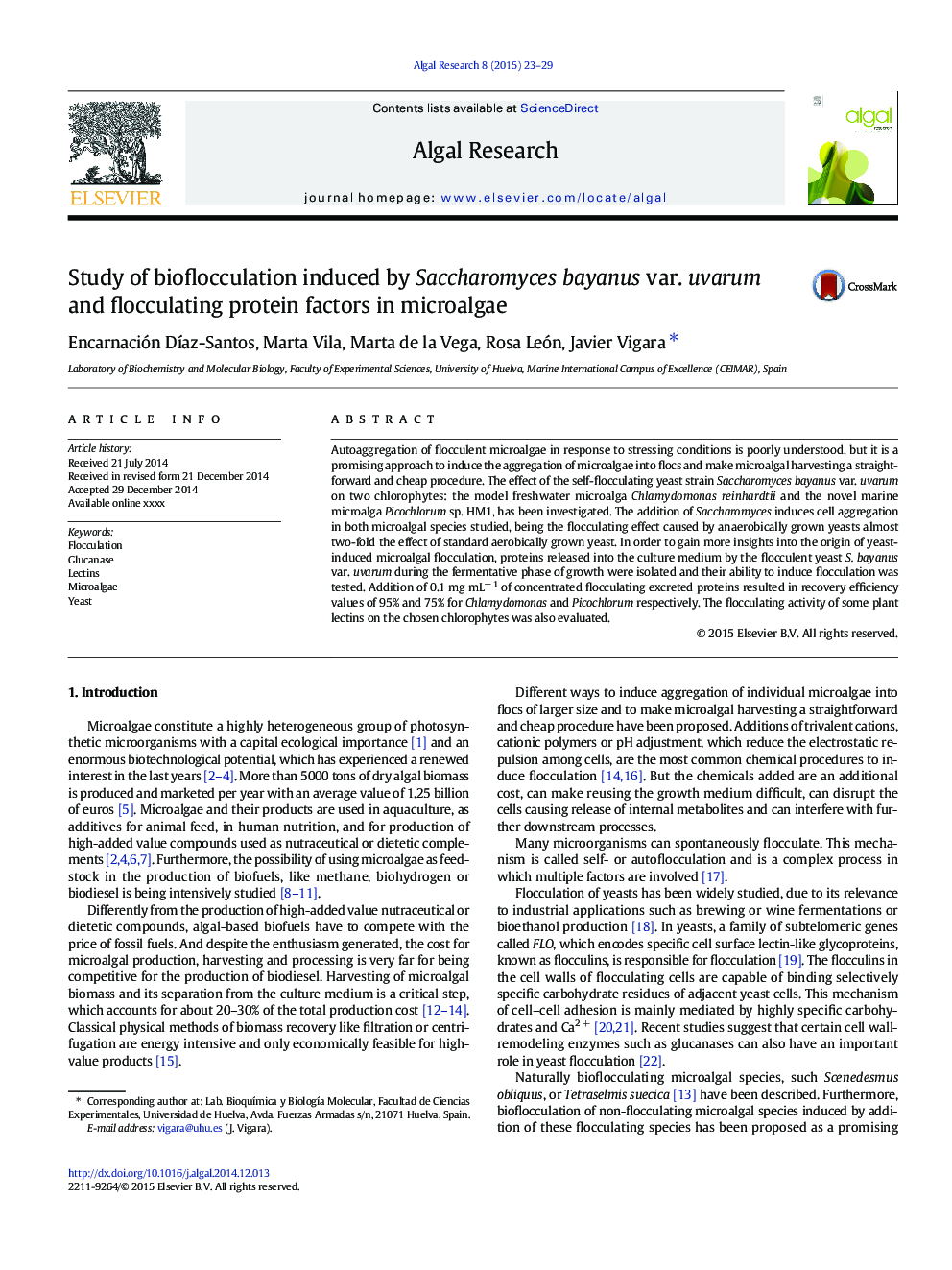| Article ID | Journal | Published Year | Pages | File Type |
|---|---|---|---|---|
| 8088197 | Algal Research | 2015 | 7 Pages |
Abstract
Autoaggregation of flocculent microalgae in response to stressing conditions is poorly understood, but it is a promising approach to induce the aggregation of microalgae into flocs and make microalgal harvesting a straightforward and cheap procedure. The effect of the self-flocculating yeast strain Saccharomyces bayanus var. uvarum on two chlorophytes: the model freshwater microalga Chlamydomonas reinhardtii and the novel marine microalga Picochlorum sp. HM1, has been investigated. The addition of Saccharomyces induces cell aggregation in both microalgal species studied, being the flocculating effect caused by anaerobically grown yeasts almost two-fold the effect of standard aerobically grown yeast. In order to gain more insights into the origin of yeast-induced microalgal flocculation, proteins released into the culture medium by the flocculent yeast S. bayanus var. uvarum during the fermentative phase of growth were isolated and their ability to induce flocculation was tested. Addition of 0.1 mg mLâ 1 of concentrated flocculating excreted proteins resulted in recovery efficiency values of 95% and 75% for Chlamydomonas and Picochlorum respectively. The flocculating activity of some plant lectins on the chosen chlorophytes was also evaluated.
Related Topics
Physical Sciences and Engineering
Energy
Renewable Energy, Sustainability and the Environment
Authors
Encarnación DÃaz-Santos, Marta Vila, Marta de la Vega, Rosa León, Javier Vigara,
